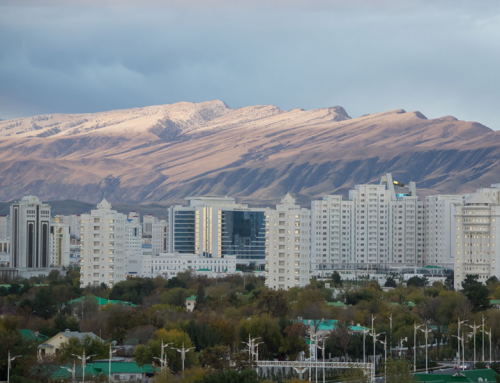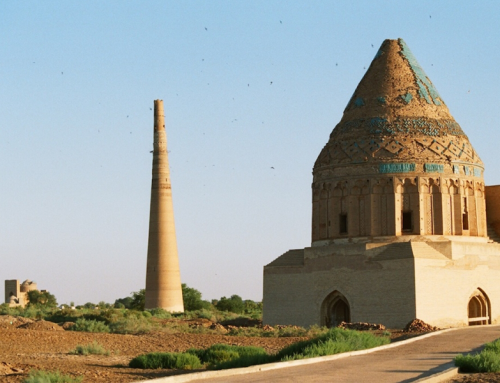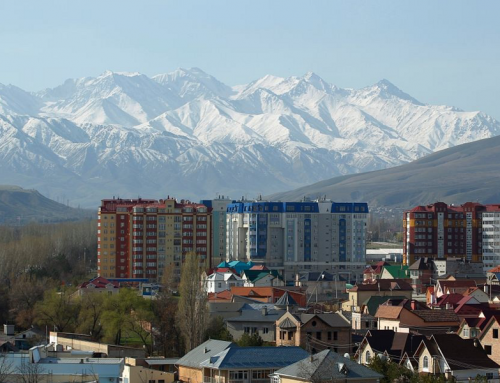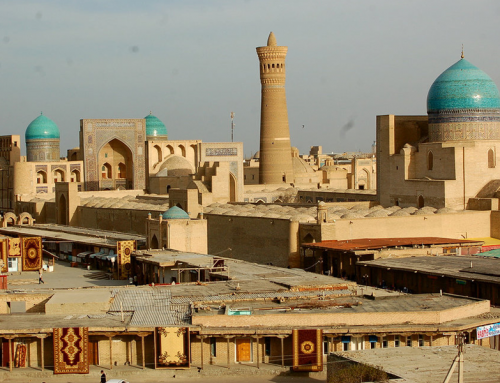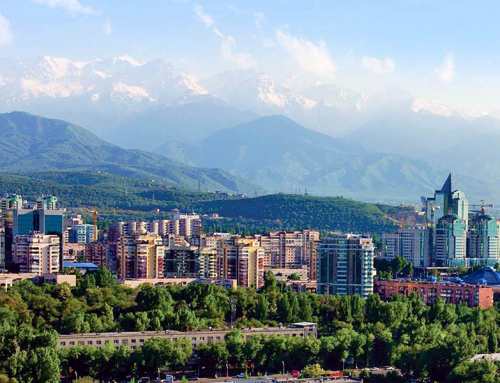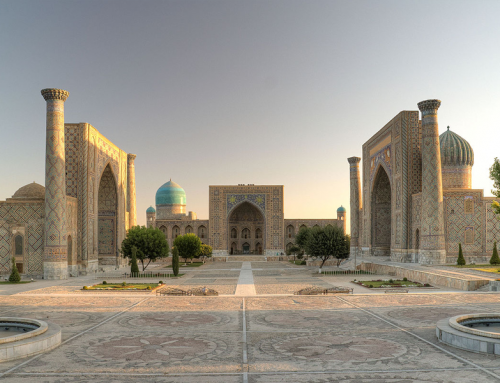In 1825, near a silk road settlement along a caravan route through the Tian Shan mountains, the Uzbek clan of Kokand, on a Chuy River tributary, built a small fort that later became Bishkek. However, in 1862, the Russians set up their own garrison which then became the town of Pishpek later becoming the capital of the new Kyrgyz social republic in 1926. Only in 1991 was it named Bishkek, the Kyrgyz version of Pishpek, the word for a kumis (fermented mare’s milk) churn. Today the city is the political and industrial capital of the independent Kyrgyzstan with an obviously relaxed atmosphere and a casual attitude toward its Soviet history and monuments. There is very little that is old in the city, and despite its economic problems, it has a growing middle class, well stocked shops, good restaurants and an influx of business people, aid workers and tourists who find friendly people and considerably simplified travel.In 1825, near a silk road settlement along a caravan route through the Tian Shan mountains, the Uzbek clan of Kokand, on a Chuy River tributary, built a small fort that later became Bishkek. However, in 1862, the Russians set up their own garrison which then became the town of Pishpek later becoming the capital of the new Kyrgyz social republic in 1926. Only in 1991 was it named Bishkek, the Kyrgyz version of Pishpek, the word for a kumis (fermented mare’s milk) churn. Today the city is the political and industrial capital of the independent Kyrgyzstan with an obviously relaxed atmosphere and a casual attitude toward its Soviet history and monuments. There is very little that is old in the city, and despite its economic problems, it has a growing middle class, well stocked shops, good restaurants and an influx of business people, aid workers and tourists who find friendly people and considerably simplified travel.

